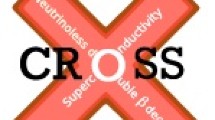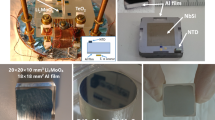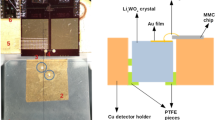Abstract
The most limiting factor for experiments looking for rare events, such as neutrinoless double beta decay, is the radioactive background. We will describe an innovative technique for the discrimination of the surface background which combine the use of thin layers of superconducting aluminum, deposited on a crystal operated as a macro-bolometer and with a fast thermistor, such as a NbSi thin film acting as out-of-equilibrium phonon sensor. The working principle is based on the fact that particles which transfer energy into the Al film create quasi-particles that release heat to the crystal with a considerable delay, that may be in the millisecond range. It is thus clear that pulses acquired from a fast thermistor in the case of surface and bulk events should have different shapes, depending on the place of the initial energy release. Here we present preliminary results on a small TeO2 crystal equipped with NbSi films and an Al film with a thickness of 10 μm. We prove that we are able to identify alpha surface events by pulse shape analysis with a good separation between bulk and surface events. The possibility to extend this rejection technique to bolometers equipped with slow temperature sensors as neutron transmutation doped Ge thermistors is under study.




Similar content being viewed by others
References
A. Giuliani, Acta Phys. Pol. B 41, 1447 (2010)
C. Nones, Nuovo Cimento B 125(4), 417 (2010)
C. Bucci, P. Gorla, W. Seidel, (2011). arXiv:1103.5296v1
J.W. Beeman et al., (2011). arXiv:1106.6286
J. Schnagl et al., Nucl. Instrum. Methods Phys. Res. A 444, 245 (2000)
C. Nones, PhD thesis (2007)
J.L. Levine, S.Y. Hsieh, Phys. Rev. Lett. 20, 994 (1968)
S.B. Kaplan et al., Phys. Rev. B 14, 4854 (1976)
C. Arnaboldi et al., Phys. Rev. C 78, 035502 (2008)
C. Nones et al., J. Low Temp. Phys. 151, 871 (2008)
L. Dumoulin et al., J. Low Temp. Phys. 93, 301 (1993)
E. Olivieri et al., J. Low Temp. Phys. 151, 884 (2008)
Acknowledgements
Part of this work was supported by a Marie Curie Intra European Fellowship within the 7th European Community Framework Programme FP7/2007-2013 (Proposal No. 236122).
Author information
Authors and Affiliations
Corresponding author
Rights and permissions
About this article
Cite this article
Nones, C., Bergé, L., Dumoulin, L. et al. Superconducting Aluminum Layers as Pulse Shape Modifiers: An Innovative Solution to Fight Against Surface Background in Neutrinoless Double Beta Decay Experiments. J Low Temp Phys 167, 1029–1034 (2012). https://doi.org/10.1007/s10909-012-0558-y
Received:
Accepted:
Published:
Issue Date:
DOI: https://doi.org/10.1007/s10909-012-0558-y




